The creepy allure of video game dungeons
Throw away the key.
"And now, as I still continued to step cautiously onward, there came thronging upon my recollection a thousand vague rumors of the horrors of Toledo. Of the dungeons there had been strange things narrated - fables I had always deemed them - but yet strange, and too ghastly to repeat, save in a whisper. Was I left to perish of starvation in this subterranean world of darkness; or what fate, perhaps even more fearful, awaited me?"
Edgar Allan Poe, The Pit and the Pendulum.
If you're playing a lot of games, there's no escaping the dusty depths of dungeons. They are everywhere; their twists and turns and nooks and crannies filled with monsters, traps and loot form the spine of countless games.
But what is a dungeon? The concept has become so worn down by time and usage that it's become hard to tell. In games, 'dungeon' means little more than a maze-like, often non-sensical arrangement of rooms whose prime purpose is simply their successful traversal; in other words, little more than a generic name for a combination of basic building blocks. And yet, 'dungeon' hasn't shaken off some associations that keep clinging to it like desiccated skin to a skeleton. The archetypal dungeon, we know, is grey and dark and musty, often sprawling in the bowels of the earth like some tumour, and adorned with morbid decor, the prime example of which is that perennial classic, the skeleton (preferably still chained to a wall with rusty chains). Dungeons can manifest themselves as mines, tunnels, sewers, caves, ruins, crypts, catacombs... and of course prisons. These are often ill-defined spaces of decay and restriction that serve no obvious purpose beyond pure aesthetic on the one hand and pure functionality on the other.

They're also associated with the Middle Ages, or medieval fantasy. The Old French word 'donjon' originally referred to a castle's keep, the most secured and fortified of its parts; which also made it ideally suited for use as a prison. Hence, the modern meaning of the word 'dungeon'. Medieval dungeons get a bad rap and live on in our modern minds as a grisly potpourri of torture chambers and oubliettes, inquisitors and iron maidens. In the post-medieval era, dungeons become the textbook example for the supposedly barbarous and uncivilised Middle Ages, an age when - so the story went - powerful lords could act on their cruellest whims with complete impunity. But the 19th century also brought with it a new fascination with the Middle Ages, its charms and its terrors. The irrationality and luridness of Gothic fiction and the morbid sensibilities of (Dark) Romanticism completely embraced the popular fantasy of the terrible medieval dungeon that's still so familiar today.

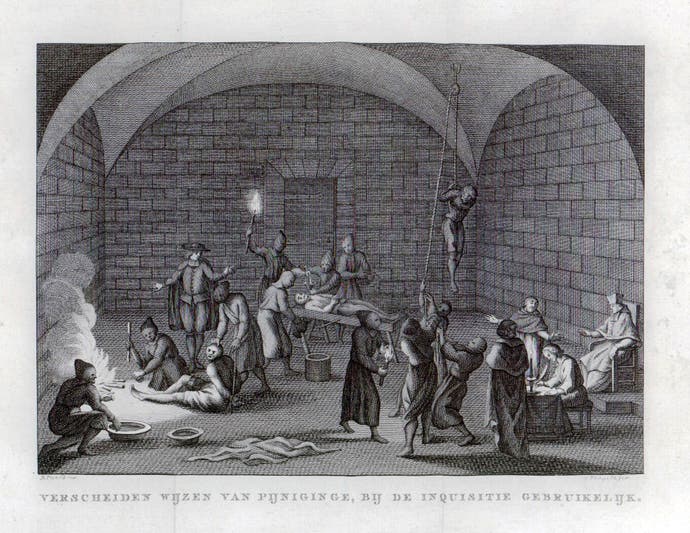
In Edgar Allan Poe's The Pit and the Pendulum, the condemned narrator already knows that a proper dungeon must include some devious, deadly trap: "The plunge into this pit I had avoided by the merest of accidents, I knew that surprise, or entrapment into torment, formed an important portion of all the grotesquerie of these dungeon deaths." One history book published in 1897 and written by Tighe Hopkins, The Dungeons of Old Paris, Being the Story and Romance of the Most Celebrated Prisons of the Monarchy and the Revolution, takes palpable pleasure in fantasies of cruelty even as it condemns the inhumanity of the dungeon:
"For indeed the mouldy records of those hidden dungeons and torture rooms of chateau and monastery [...] into which the hooded victim was lowered by torchlight, and out of which his bones were never raked, might shew us scenes yet more forbidding than the darkest which these chapters unfold. But they have crumbled and passed, and history itself no longer cares to trouble their infected dust."
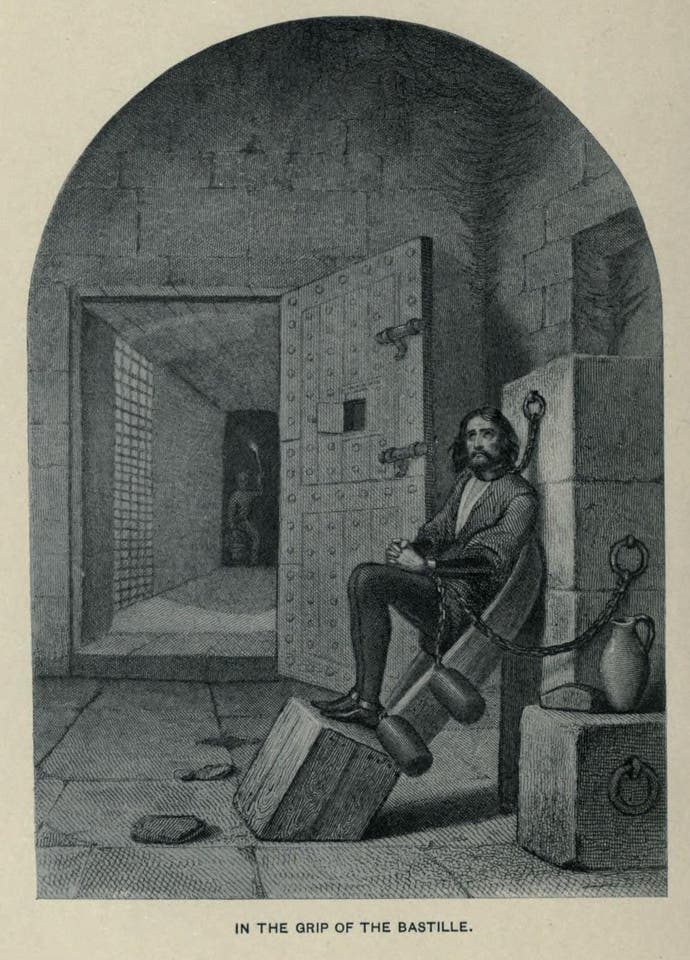
It was a time, we are told, "when every abbot was free to wall-up his monks alive," and when the "black walls of the torture chamber [...] gave back the groans of many thousands of mutilated sufferers". Naturally, such a view is at best a dramatisation that takes creative liberties, at worst a severe and brazen distortion of the past. And yet, these morbid fantasies have continued to bloom well into our modern age, and video games keep breathing new life into the dusty corridors of dungeons.
There's more than one reason why dungeons continue to be popular, and they're as inextricable from each other as limbs joined by manacles. One part of their appeal is a tension between extreme claustrophobia and a dizzying sense of unlimitedness. Video game dungeons are expansive as a rule, maze-like mega-structures made up of layers like a giant mouldy cake. They play with the thought of what might hide deep beneath our feet in the world's dark underbelly. The Depths and Blighttown of Dark Souls, or the dungeons of games like Ultima Underworld, Arx Fatalis or Diablo: they are often about long descents into unsuspected depths, where each layer gives way to another one as we burrow deeper and feel the weight of the world above us accumulating. They may seem like the opposite of open world games, but they too offer the thrill of possibility and exploration, though one less to do with freedom of movement and more with bringing light to dark places, and the joy of gradually unravelling tangled pathways.
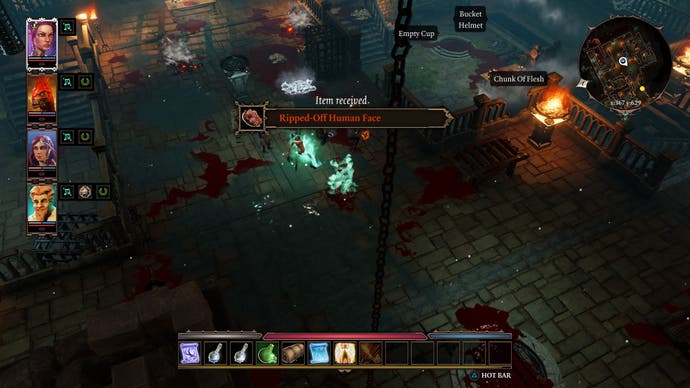
With darkness come creepy, or even horrific things. The morbidity of video game dungeons often surpasses even Hopkins' lurid descriptions, with rivers of blood, piles of mutilated, putrid corpses, and hordes of evil and malformed creatures. The difference between an RPG and a (survival) horror game such as Amnesia: The Dark Descent is mostly that in the former, we come as challengers and slayers of evil, in the latter, as its potential victims. In either case, there's something enjoyable about our encounters with barbarity. Games like Dungeon Keeper acknowledge this morbid joy by inverting the roles and letting us design a dungeon filled with devious traps, torture chambers and evil minions; a light-hearted yet slightly sinister parody of both dungeon crawlers and management games. At the heart of the game, there's still the allure of something darkly intricate, but instead of mapping it, we become its architects.

The paradox of the dungeon is that, even as we enjoy lingering in its moribund atmosphere, we also must pretend that escaping its confines is our most important goal. Once we have reached the lowest level or slain the ultimate evil, we are told we get to walk free, but by that point, the game may have already ended with nothing but the promise of sunlight. Or there's simply another dungeon in which to get lost a couple of steps down the road. The paradox also becomes apparent in another trope. Think of the number of RPGs in which our character starts the adventure locked away in a dungeon: Irenicus' dungeon of Baldur's Gate 2, the goblin prison of Arx Fatalis, the Imperial prison of Oblivion, Fort Joy and its dungeons, the torture chambers of The Witcher 2, the cells of the Undead Asylum of Dark Souls, to name a few. All of these have in common that they throw us in the middle of the dreary and the horrific and task us with breaking out. They use the old dungeon trope to communicate the 'escapist' nature of fantasy games; here, we get to transcend the narrow confines of our lives and escape into a fantasy land full of possibilities; that is, mainly more dungeons. We break out of prison to break into other prisons.
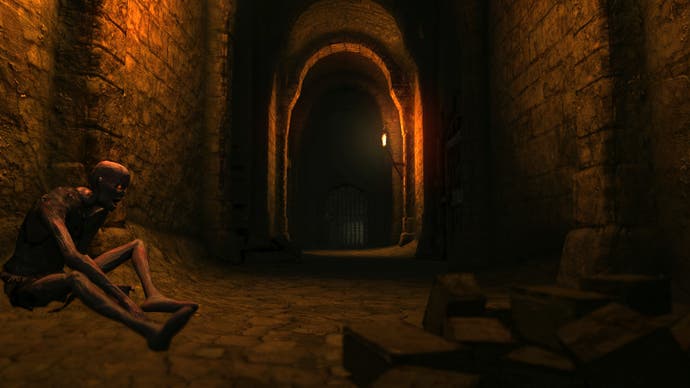

Dungeons are omnipresent and mundane; so overused that the very word has become a near-meaningless thing, an amalgam of vaguely associated concepts. They are an ancient cliché, as smothering and suffocating, as dusty and cobwebbed as any window-less prison cell. The secret real horror of the video game dungeon, perhaps, is that even in a hundred years, we're still going to run up and down the same grey, featureless corridors, like confused characters from some Kafkaesque nightmare.
Of course, it doesn't have to be that way. There's a reason the dark fantasy of the dungeon has been sticking around for hundreds of years. But perhaps it's time to renovate these crumbling structures. The literature and art of Dark Romanticism and Gothic horror shows that there can be pathos and even a kind of beauty in the ruinous and barbarous, while the famous 18th century etchings of imaginary prisons by Giovanni Battista Piranesi illustrate the creative potential locked away behind iron bars; his prisons manage to be coldly technical, wildly fantastical and darkly atmospheric all at the same time.
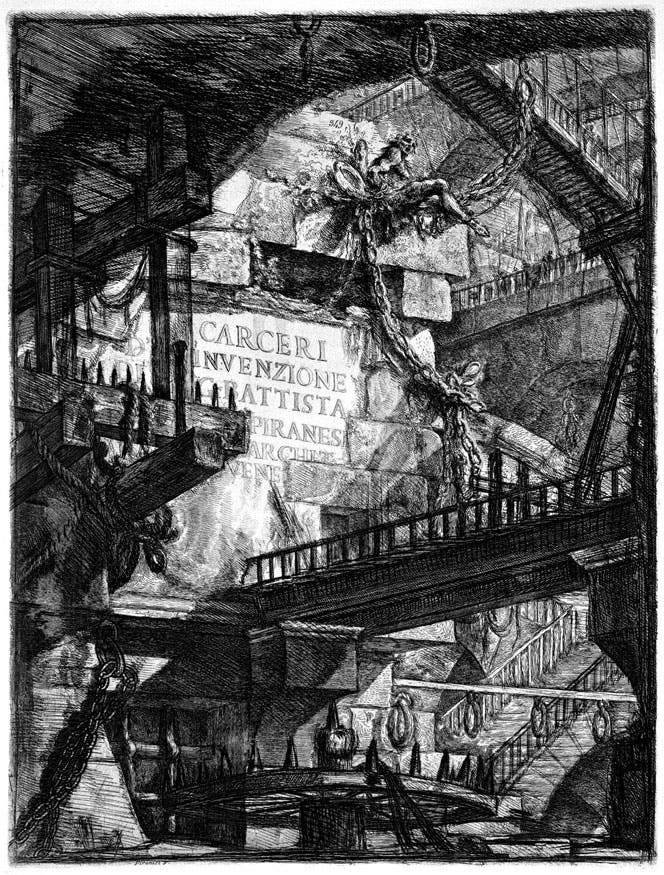


Their influence can be felt most strongly in From Software's games, from Demon's Souls and Dark Souls to Bloodborne and, to some degree, Sekiro. Take the Tower of Latria from Demon's Souls or Sen's Fortress from Dark Souls, which retain the horrors we know and love (iron maidens, deadly traps etc) while reconfiguring them into something both fascinating and unsettling, familiar and strange. Here, we rediscover the powerful fascination of the dungeon as a place that imprisons while itself being impossible to contain. A forbidden, amoral world of horrors that delight and ensnare, and make us want to stay lost and trapped within grey walls resounding with the moans of the tortured and condemned.
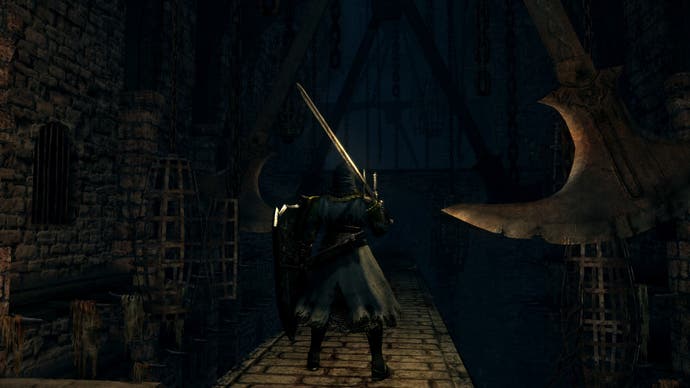
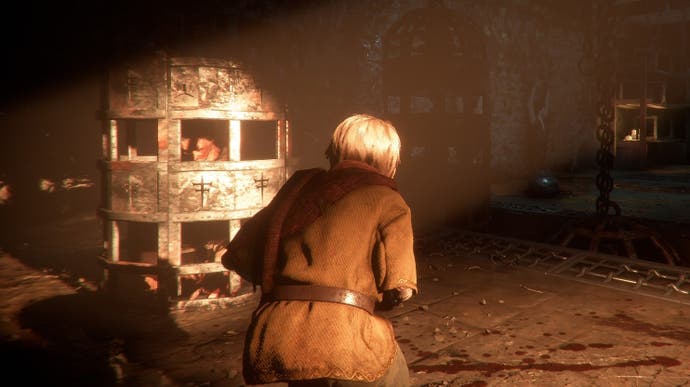





.jpg?width=291&height=164&fit=crop&quality=80&format=jpg&auto=webp)
_Rwmp6uD.jpg?width=291&height=164&fit=crop&quality=80&format=jpg&auto=webp)

